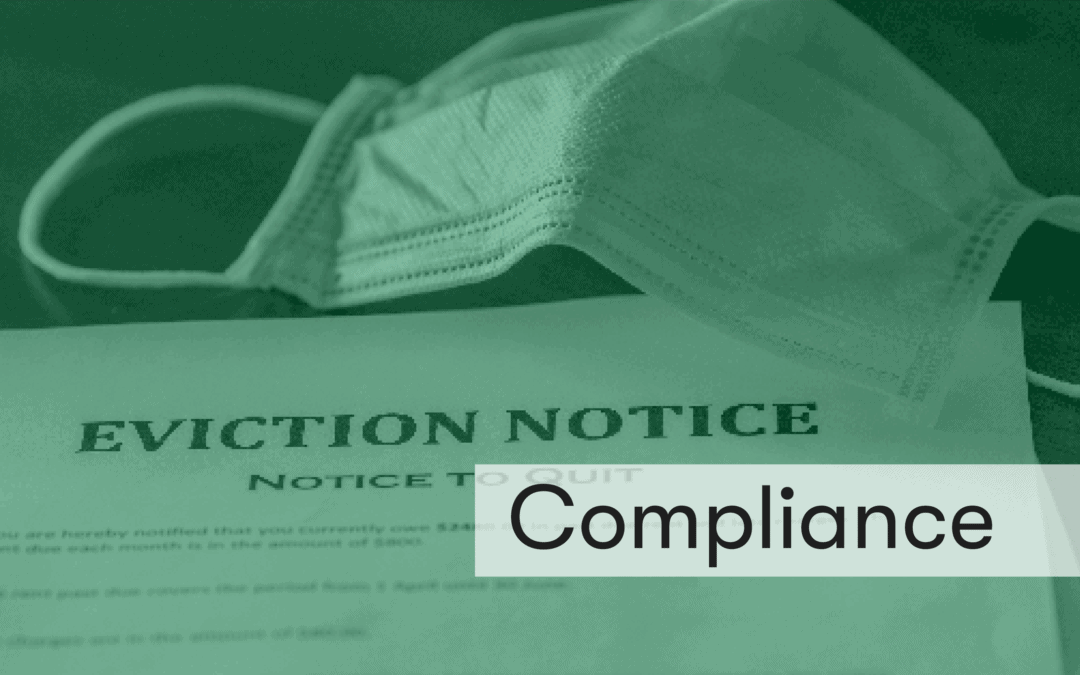On September 4, 2020, the Centers for Disease Control and Prevention (CDC) published an agency order in the Federal Register that provides for a temporary halt in residential evictions to prevent the further spread of COVID-19. This order is different than the moratorium provided under the recent CARES Act and should not be confused with that one.
Let’s take a look first at the details of the CDC order and then we will cover our recommendations for complying with the order.
The CDC moratorium is in effect from September 4, 2020 through December 31,2020. In order to claim protection, a resident must qualify as a “covered person” and execute a declaration to that effect under penalty of perjury. Each adult in the household and listed on the lease, should sign his or her own declaration. The requirement for a proactive declaration by the tenant is different from the CARES Act moratorium, which had no such requirement, and was in essence, automatic.
A “covered person” is defined as one who:
- Has used best efforts to obtain all available government assistance for rent or housing;
- Expects to either earn no more than $99,000 in annual income for Calendar Year 2020 (or no more than $198,000 if filing a joint tax return); or was not required to report any income in 2019 to the IRS; or received an Economic Impact Payment (stimulus check);
- Is unable to pay the full rent or make a full housing payment due to substantial loss of household income, loss of compensable hours of work or wages, a lay-off, or extraordinary (more than 7.5% of AGI) out-of-pocket medical expenses;
- Is using best efforts to make timely partial payments as the individual’s circumstances may permit, taking into account other nondiscretionary expenses; and
- Eviction would likely render the individual homeless or force the individual to move into and live in close quarters in a new congregate or shared living setting as the individual has no other available housing options.
It is important to note that even if a person invokes his or her rights under this order, he or she still owes the rent and is still obligated to abide by the terms of the lease. This order does not prevent a landlord from evicting a household for other violations of the lease.
The CDC has provided a Declaration form (https://www.cdc.gov/coronavirus/2019-ncov/downloads/declaration-form.pdf) that can be used for this purpose, but residents are not required to use the CDC form. Any declaration that meets the requirements is acceptable. Please note that the CDC form also has residents acknowledge:
- The obligation to pay rent, and comply with the terms of tenancy;
- That fees, penalties, and interest due to underpayment of rent specified in the leasing documents may still be charged and collected; and
- When this temporary halt on evictions ends on December 31, 2020, if full payment has not been made, the resident may be subject to eviction under state and local laws.
Now that we have covered what the order says, let’s talk about the details.
For residents with Section 8, PRAC, Public Housing, or voucher assistance, remember, they have the right to request an Interim Recertification for any change that will reduce that amount of monthly rent due. This should always be the first step when an assisted resident says that they are unable to pay the full rent due.
For market rate residents, note that this order does not give residents free reign to stop paying rent. One of the five required statements in the declaration says, “I am using best efforts to make timely partial payments that are as close to the full payment as the individual’s circumstances may permit, taking into account other nondiscretionary expenses”. This means residents needs to be working with the landlord to pay what they can while also acknowledging that they still owe the full amount of the rent. One could argue that if they are not paying anything, and have not discussed partial payments with the landlord, then they cannot certify under penalty of perjury on the declaration.
Unfortunately, the CDC order does not mention whether a landlord can challenge a declaration. We understand from attorneys who specialize in landlord-tenant law that there may be further guidance on this issue released by the CDC in the near future. For now, we recommend that landlords proceed with caution. It is acceptable to discuss the declaration with the resident and review the statements to which they are certifying but we do not recommend getting into a conflict with the tenant over the veracity of their declaration if you believe it to be inaccurate. Best to document any concerns you have in the tenant’s file as well as any relevant discussions you have with the tenant. Also, is a good practice to obtain the resident’s signature on this documentation, if possible.
There are also those who question the CDC’s legal authority to issue and, more importantly, enforce, an eviction moratorium. While legal challenges may be forthcoming, the outcome of those challenges is far from certain and it is highly likely the moratorium will have expired before the legality issues are resolved. We recommend landlords consult with their legal counsels before taking any action that may put them in conflict with the CDC’s order.
Questions about the CDC Order may be directed to Lisa Vercauteren at lvercauteren@nchm.org.

